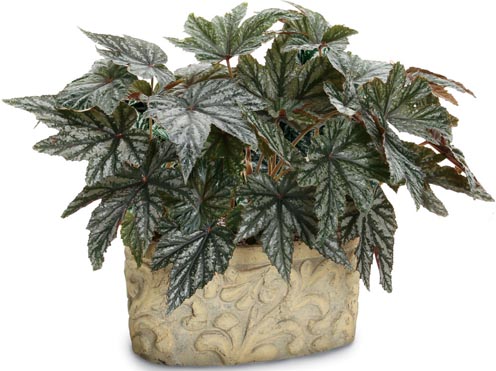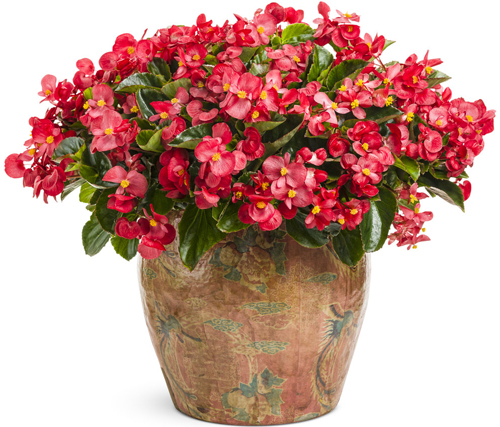Overwintering Begonias
Some Begonias go dormant for the winter and others have no dormant period and continue to grow and flower for the entire winter.
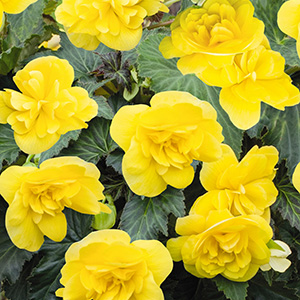 Tuberous Begonia | 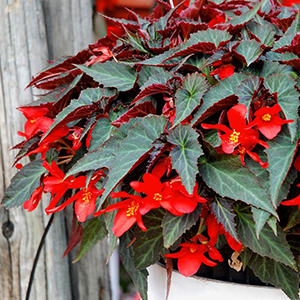 Tuberous Begonia |  Rex Begonia |
As fall approaches many gardeners want to bring their flowers indoors to keep enjoying them into the fall and winter months. Begonias are often a problem for many people because Begonias differ so much in the way they grow. Some Begonias go dormant for the winter and others have no dormant period and continue to grow and flower for the entire winter. Knowing which Begonia you have can help a lot in having success with bringing the plants indoors for the winter.
Some basics:
When bringing plants indoors from an outdoor garden area, there are some basic do’s and don’ts to consider. The first priority is to make sure your plants are free of insects or disease before bringing them in for the winter. Indoor conditions are very stressful to most plants and when plants are stressed they are more susceptible to insects and diseases. So before you bring plants in for the winter you will want to give them a good looking over. It will save you problems later in the winter when you may not want to use chemicals indoors.
Indoor conditions are generally lower light than outdoors, so plants will have to adjust to lower light levels, sometimes they can do this easily and sometimes they must drop their outdoor leaves and grow new leaves that are better adapted to interior conditions. Plan for some leaf drop until plants become established again. All Begonias need bright filtered light when brought indoors and can sometimes be grown in full sun, but be careful not to burn plants by exposing them to bright sun if they were grown in the shade previously.
The inside of your house is also very dry due to your heating system which removes water from the air as it heats the air in your house. You can make life a lot easier for your plants if you provide a source of humidity. Many people mist their indoor plants and while this helps it only lasts for a short period. A better long term solution is the use of a pebble tray under your plants where water can be added as it evaporates to keep the humidity higher around your indoor flowers. A pebble tray is simply a container that holds water filled with pebbles so that your plants sit on the pebbles and not in the water itself. As water evaporates around the plant it creates a small “greenhouse” effect.
Begonia types:
Begonias are incredibly diverse, so knowing what type of Begonia you have makes it a lot easier to succeed in over wintering them. Also many people confuse the Strawberry Begonia (Saxifraga stolonifera) with a true Begonia, it is not related at all but does make a nice houseplant in bright windows through the winter.
Rhizomatous Begonias
This group is the easiest to maintain indoors and make wonderful house plants in a bright filtered light setting. The way to tell if you have a rhizomatous begonia is to look for the rhizome or thick stem creeping along the surface of the soil. Begonias in this group like to be kept lightly moist and lightly fertilized all winter and do not go dormant, so never dry them out entirely. Most are winter flowering and can provide not only beautiful foliage but also sprays of white to pink flowers in late winter. Examples of these Begonias include: Black Coffee, Last Laugh, Palomar Prince, and River Nile.
Cane type & bedding begonias
These two groups look very different but are both easy to keep over the winter. The Cane types include Angel Wing Begonias and also the Dragon wing types. These need very bright light to look their best, but not scorching sun. Keep lightly moist and lightly fertilized through the winter months. They never go dormant, so do not allow them to become very dry. Examples of Cane and Fibrous begonias include: Sinbad, Dragon Wing, Gum Drops, Buttered Popcorn, Maribel, Benigo, Burning Bush, Angel Wing, and all the bedding types usually sold for the landscape.
Rex Begonia
Rex Begonias are a bit more of a challenge for indoor growing, but with a high humidity level can be gorgeous with bright filtered light. These plants like constant moderate moisture, high humidity, and regular fertilization. They do not go dormant, so never allow them to dry out. They are very sensitive to dry roots and quickly decline if not cared for. However their electrifying foliage makes them one of the most desirable plants for both containers outdoors and inside. If you can grow African violets, you can grow Rex Begonias, so give them a try. Examples of the Rex Begonias include: The Great American City Series, Fire Flush, Capricorn, Taurus, and Fairy.
Bedding Begonia |
Tuberous & Tuberous types of Begonias including B. boliviensis
OK, if you have succeeded with other Begonias here is your final exam. The tuberous Begonia group
REQUIRES winter dormancy. This means you need to begin in fall by reducing the water to the plants until the tops have died back and the soil is completely dry. Once the plant has gone completely dormant most gardeners remove the tuber from the soil. The tuber is usually found where the stems meet the ground. Carefully clean off the tuber of soil and old roots and store in a warm dry location over the winter. Some gardeners swear by a fungicide powder to control diseases on the dormant tuber. This can be applied before storing the tubers.
In early spring the tubers may be replanted in fresh soil and given a head start on the season in a bright windowsill where they do not become chilled. The tuber should be planted so that the upper surface is at the surface of the soil; no deeper. When planting the tubers, water them well with a light fertilizer and do not water again until either the soil dries or you begin to see new stems emerging from the soil. Most gardeners start their tubers in small pots 4”-5”. This way they can be transplanted into larger pot later but they do not become too wet during the crucial period where they are waking up and beginning to grow.
New growth means your tubers are beginning to grow new roots and need to given fertilizer and water on a regular basis. Never allow tuberous begonias to become soggy, they are very sensitive to root rot if they stay too moist. Examples of Tuberous type Begonias include the following: Illumination, Non-Stop, On Top, Ornament, Panorama, Pin Ups, and Charisma series.
As with all garden plants brought indoors for the winter, you may have good luck and you may not. Remember that if all of this seems like too much work you can simply buy new plants in spring and start clean. Also Begonias can be prone to a variety of bacterial and fungal problems, especially under indoor conditions, so if you see problems of this type showing up during the winter, contact your local garden center for advice on how to control any problems.
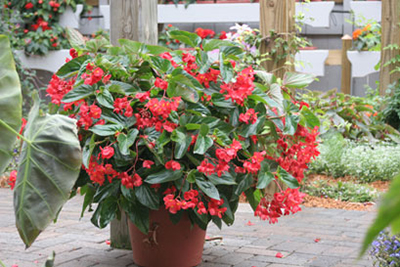 Angelwing Cane Type Begonia | 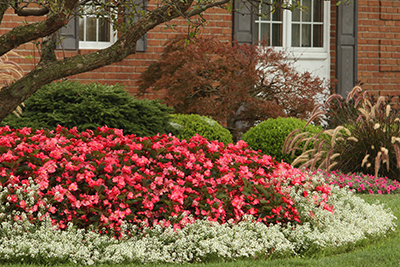 Bedding Begonia |
Want to learn more?
Can I Keep It? How to Overwinter Plants Indoors



